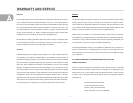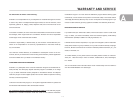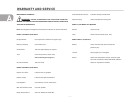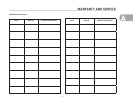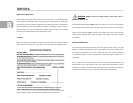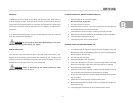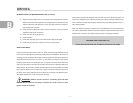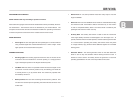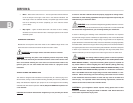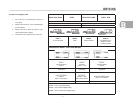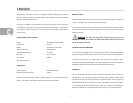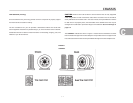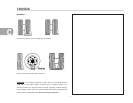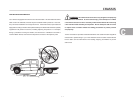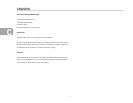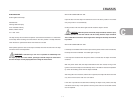
B
DRIVING
B - 5
• Mirror - Move center switch to R or L. The four perimeter switches will then
move the flat part of the right or left mirror in the direction indicated. The
wide angle mirrors are adlusted manually. The paddle type switch marked
heat is for defrosting the mirrors. (Hopefully you won’t need this unless
you’re a skier).
• Map Lights – Lights mounted above both cab seats to aid in reading.
Switches are mounted in both armrests. These lights operate on the Coach
electrical system.
POWER SEAT CONTROLS
Besides the normal power seat switch there are two additional finger levers. One
allows the seat to recline and the other will allow the seat to rotate.
WARNING: Never adjust drivers seat while vehicle is in motion.
CAUTION: Revolving the power seat completely around will pull the wiring
apart. The seats should only be swiveled toward the center of the vehicle. If the
wires are loosened following the color code can reconnect them: Red-to-red,
green-to-green, etc. On some models the wires will be on a plug that can be
reattached.
TRAILER TOWING AND DRIVING TIPS
This vehicle is designed and intended to be used primarily as a load-carrying recre-
ational vehicle, towing a trailer will affect handling, durability and economy. Maximum
safety and satisfaction depends upon proper use of correct equipment and avoiding
overloads and other abusive operation. The 10, 000 pound GVW hitch requires a 2.5”
x 2.5” draw bar.
CAUTION: The maximum loaded trailer weight that you can pull with your vehicle
is listed on the hitch. Vehicles should be properly equipped for towing trailers.
Information on trailer hauling capabilities and special equipment required may be
obtained from your Airstream dealer.
WARNING: Gross Combination Weight Rating (GCWR) means the maximum
allowable loaded weight of this motorhome and any towed trailer or towed vehicle. Do
not exceed this weight whenever you are towing behind your motorhome.
To assist in attaining good handling of the vehicle/trailer combination it is important
that the trailer tongue load be maintained at approximately 10% of the loaded trailer
weight, but not to exceed the hitch weight ratings. Tongue loads can be adjusted by
proper distribution of the load in the trailer, and can be checked by weighing separately
the loaded trailer and then the tongue. When towing trailers, tires should be inflated to
the highest pressures shown on the information plate attached to the driver’s doorjamb
or dash of your motorhome. The allowable passenger and cargo load (GVW) of this
vehicle is reduced by an amount equal to the trailer tongue load on the trailer bitch.
WARNING: The towing vehicle’s braking system is rated for operation
at GVWR (GROSS VEHICLE WEIGHT RATING), NOT at the GCWR (GROSS COM-
BINED WEIGHT RATING). A separate functioning brake system is required for
any towed vehicles or trailers weighing more than 1000 lbs. (450 kg) when fully
loaded. NEVER exceed the GVWR (GROSS VEHICLE WEIGHT RATING), or the
GAWR (GROSS AXLE WEIGHT RATING) specified on a motorhome certification
label. Also NEVER exceed the weight ratings of trailer hitch installed on a mo-
torhome. Failure to heed any part of this warning could result in loss of control
of the motorhome and towed vehicle or trailer and may cause an accident and
serious injury. For specified towed vehicle braking requirements, consult the
chassis owner’s manual that comes with this vehicle.
CAUTION: If your Freightliner chassis requires towing please refer to their
manual for directions. They may be called at 1-864-487-1700. Towed vehicle and
trailer brake requirements vary by state.



